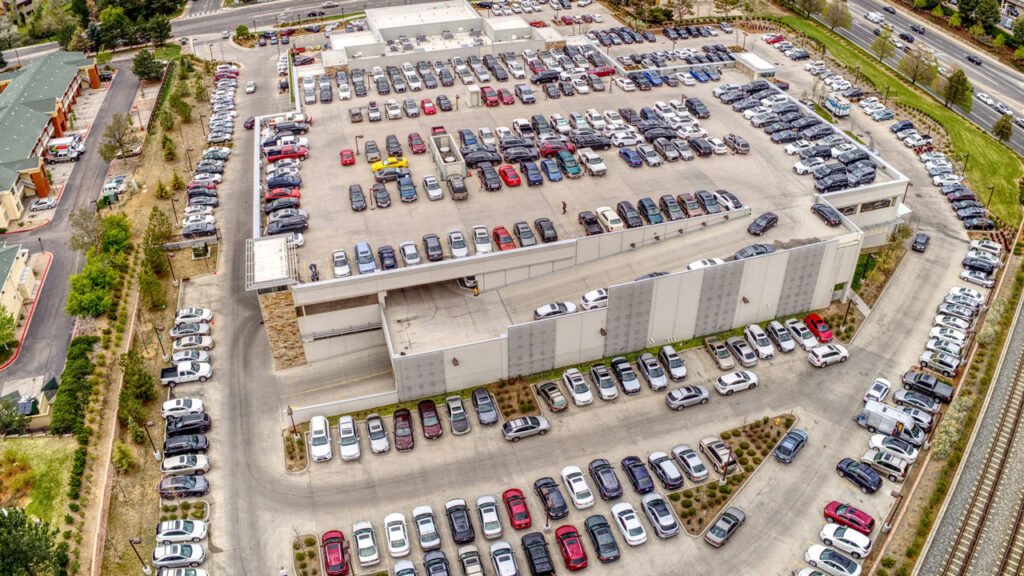The Global Automobile Industry Has Entered the Winter in 2024

The global automobile industry has entered the winter, and opportunities for Chinese automobile companies have come. Chinese car companies have developed the ability to withstand the cold in advance in the brutal competition in the local market, which allows them to see the possibility of entering overseas markets and achieving growth against the trend.
The Global Automobile Industry Text.
Global car sales will return to the 90 million mark in 2023, an increase of 11% year-on-year in 2022. In terms of regions, the two major markets of Western Europe (14%) and China (12%) both achieved double-digit growth. Faced with such eye-catching data, the global automobile industry has expressed pessimism about the market prospects in 2024. The differences between macro data and corporate perceptions are not unique to China. In the automobile market, this is a common problem.
After reaching a historical high of 95.7 million vehicles in 2017, Global Automobile Industry sales have continued to decline. Affected by the epidemic, they fell below the 80 million mark in 2020. Since then, due to the supply chain crisis in 2021 and 2022, the recovery of the global automobile industry has been slow, and sales It will hover around 82 million until it returns to 90 million in 2023.

The high sales growth rate in 2023 is not because the market is really good, but because the market was so bad in the previous two years. 2023 will only be a recovery growth, and the global market has not yet returned to the level of 2019 before the epidemic.
In the past few years, global auto companies have generally experienced growth in revenue and profit data due to insufficient supply in the auto market. However, most companies expect that 2023 will be the end of this recovery cycle. The auto industry will usher in a cold winter in 2024, and the impact of new energy transformation will be The theoretical impact will turn into a real impact. Fuel vehicles will be sold less and less, and new energy vehicles will be sold more and more at a loss. The situation will be staged on a global scale.
In order to cope with the coming cold winter, automobile and key supplier companies have two main preparations: lowering expectations and reducing costs.
Lowering expectations reduces Risk at The Global Automobile Industry.
The representative company that lowered its expectations is Tesla. After the U.S. stock market closed on January 24, 2024, Tesla released its unaudited 2023 financial report, in which many profitability data were lower than expected.
Tesla’s revenue is still growing, but the growth rate is less than 20%. All indicators of profitability have declined significantly. Gross profit, operating profit, and EBIT have all experienced double-digit declines. Operating cash flow and free income have all declined by double digits. Cash flow has also declined significantly. This financial report can be said to be the ugliest annual report since Tesla’s operating profit turned positive in 2020.

Compared with revenue and profit data, Tesla’s delivery data still maintains strong growth, producing 1.846 million vehicles, a year-on-year increase of 35%, and delivering 1.809 million vehicles, a year-on-year increase of 38%. More cars are sold, but the money earned is less and less. The main reason is the decline in the average price of a bicycle. In 2023, Tesla’s average price of a bicycle decreased by US$8,820, a decrease of 16.2%.
Musk talked about expectations for 2024 during the earnings call, and clearly mentioned that Tesla’s automotive business growth rate in 2024 may be significantly lower than that in 2023, because the company is between two generations of product waves, the previous one The first wave is the global hot sales of Model 3/Y, and the next wave is the global expansion of the next-generation model planned for mass production at the end of 2025.
After Tesla released its financial report and Musk gave his expectations for 2024, Tesla’s stock price fell sharply. The stock price was US$207.83 before the release of the financial report on January 24, and fell to US$182.63 at the close of January 25. The market value Over 80 billion US dollars evaporated.
However, Musk lowered his expectations for 2024 and conveyed a pessimistic voice to the market, which actually effectively reduced risks. At this stage, Tesla’s sales fundamentals are still solid. Model Y will be the world’s best-selling model in 2023, and the fully reconstructed FSD Beta V12 autonomous driving software is about to be launched on a large scale. These factors are driving up the market’s expectations for Tesla.
Tesla’s biggest risk in 2024 is competition from Chinese car companies. In 2024, Chinese car companies will accelerate their entry into overseas markets. Musk said on the earnings call, “If there are not trade barriers established, Chinese car companies can almost destroy most other companies in the world.” (Frankly, I think, if there are not trade barriers established, they will pretty much demolish most other companies in the world.)

Compared with European and American investors, Musk knows more about competitors from China, so he needs to lower the market’s expectations for Tesla and release risks as early as possible to avoid suffering greater losses when the risks exceed expectations.
Similar to Tesla, overseas traditional car companies are also lowering market expectations for 2024. Due to the market environment of short supply in the past two years, most of these traditional car companies have performed well in terms of revenue and profits, but these cars Everyone knows how cruel the Chinese auto market will be in 2023. The global auto market in the next few years will be a replica of the Chinese auto market in 2023.
The high profits of the past few years have made these companies generally face union demands for salary increases, increased benefits, and contract extensions. However, car company managers know how cruel the upcoming competition will be. The wealth accumulated in the past two years is that they can be used in future competition. Capital to survive, especially the impact of new energy transformation is about to change from theory to reality. Car companies must tighten their purse strings, and if they want all employees to save money and food together, lowering expectations is a key step.
Wave of layoffs sweeps The Global Automobile Industry.
There are many ways to survive the winter. It is recognized that the most effective method is to reduce costs, and the first step in reducing costs is often layoffs.
Starting from the second half of 2023, news of layoffs has continued in the automotive industry. In September 2023, Volvo laid off 700 people, and the Mercedes-Benz truck division closed its Brazilian factory, laying off 3,600 people. In October, Volkswagen laid off 2,000 jobs in the Cariad software department. The three major U.S. car companies laid off more than 100 employees in the confrontation with the United Auto Workers union strike. 7,000 people. In November, Continental announced layoffs, estimated at 5,500 employees, and NIO announced 10% layoffs. In December, GAC Toyota and GAC Honda laid off 1,000 and 900 employees respectively. This was the first time that two major Japanese car companies had large-scale layoffs in China.
Entering 2024, in early January, Valeo and Bosch announced the layoffs of thousands of employees. On January 19, ZF announced its largest layoff plan to date. A total of 12,000 jobs will be eliminated in the next few years, which directly triggered a protest by more than 3,000 people at the company headquarters.
These layoff companies are all representative companies in the Global Automobile Industry. Take the four parts companies Continental, Bosch, ZF and Valeo as examples. They are all leaders among international automotive suppliers. In the list of the top 100 global auto parts companies in 2023, Bosch ranks first. ZF ranked 3rd, Continental ranked 9th, and Valeo ranked 12th.
What is slightly surprising is that the layoffs are not limited to fuel vehicle-related departments, but also include positions related to electrification and intelligence. For example, Bosch’s latest layoff plan for 2024 is to eliminate 1,200 positions in the software and electronics departments by the end of 2026. Bosch explained that due to high inflation and rising raw material and energy prices, the pace of electrification transformation may slow down, so corresponding positions need to be eliminated to adapt to the new competitive environment.
ZF’s massive layoff of 10,000 people is the largest recent layoff in the automotive industry. ZF’s core business is gearboxes, and its representative product, the longitudinal 8AT automatic gearbox, has been one of the best gearboxes on the market since its launch. , its gross profit from selling a gearbox is even as much as the gross profit from selling a car by an automobile manufacturer.
Because its core business is highly related to fuel vehicles, the impact of the electrification transformation is particularly painful. When ZF explained its decision to lay off employees, it said, “We also want to save jobs, but the transformation to electric vehicles alone will lead to job losses.” Reduction. Some electric vehicle parts can be manufactured with half the labor required before.”
The passenger car businesses of BMW and Mercedes-Benz, which were absent from the recent news of layoffs, do not need layoffs, but have completed large-scale layoffs of nearly 10,000 people as early as 2022.
European companies account for the highest proportion of companies that have made large-scale layoffs, and the scale of layoffs is generally larger, which reflects that European companies believe that their business risks are rising.
Benjamin Krieger , Secretary General of the European Automotive Suppliers Federation (CLEPA) , said that due to the need for large investments in uncertain future technologies, combined with the impact of the epidemic, inflation, and energy crisis, European auto suppliers The cost has increased significantly, but currently, because car companies are also experiencing the pain of transformation, it is difficult to pass on cost pressure to car companies. A large number of auto parts suppliers in Europe are facing operational risks.
CLEPA’s survey shows that more than half of European automotive suppliers have profit levels below 5%. This level of profitability cannot guarantee sustainable business development. CLEPA has previously issued a warning that the 1.7 million jobs in the European automotive supply chain may be reduced by 500,000 by 2040. Even if Europe’s progress in developing local new energy and intelligent-related supply chains is very optimistic, the reduction of jobs will still be limited. No less than 250,000.
Although there is not much news about layoffs among Chinese car companies, every car company continues to emphasize the expectation that competition in 2024 will be more brutal than in 2023.
In 2024, winter will become the main theme of the global automotive industry. In the past two years, the brutal competition in China’s auto market has allowed Chinese auto companies to develop the ability to withstand the cold in advance. This has allowed Chinese auto companies to see the possibility of entering overseas markets and achieving growth against the trend.
See More:
Taylor Swift Search Was Blocked X’s Poor Actions
Chip Implanted In The Brain: Will Musk’s Challenge Be A Blessing?
Neuralink “First Successful Transplant Of Computer Chip into Human Brain”
Tesla Going Backwards: Market Capitalization Evaporates 277 Trillion Won In One Month



Leave a Comment